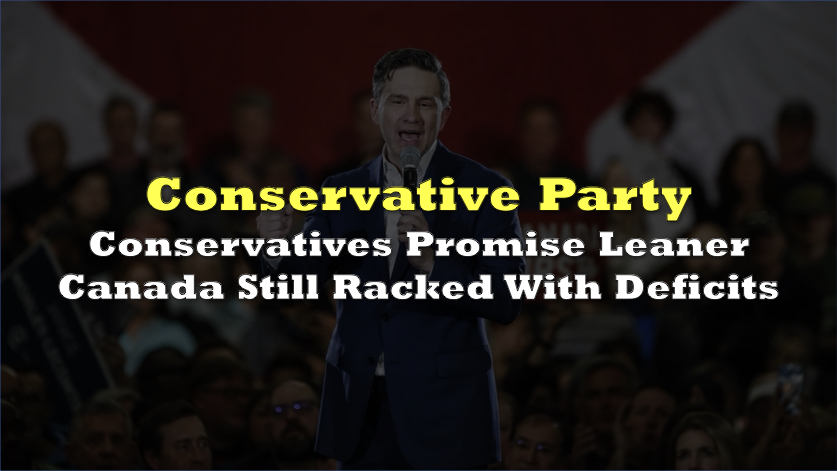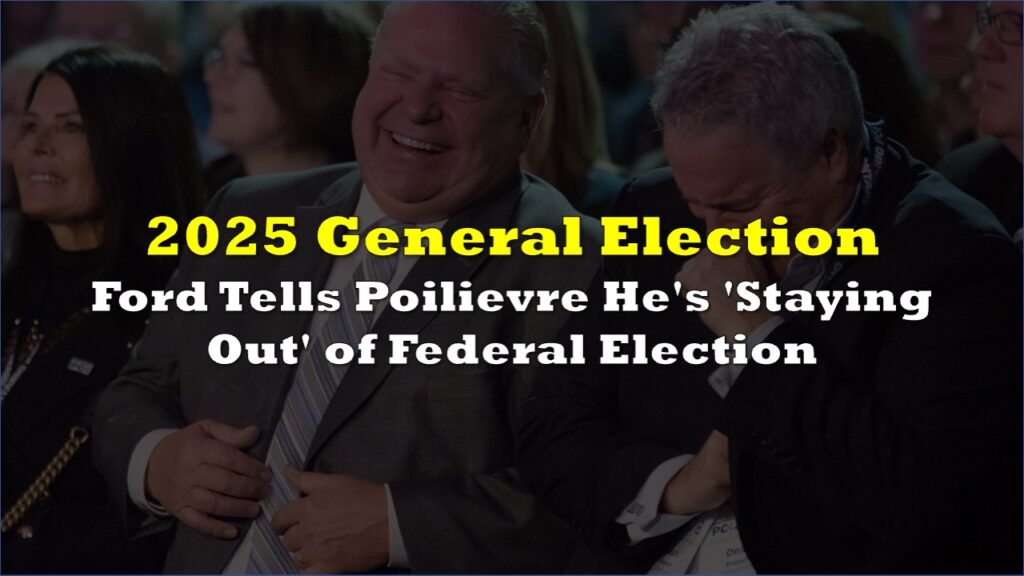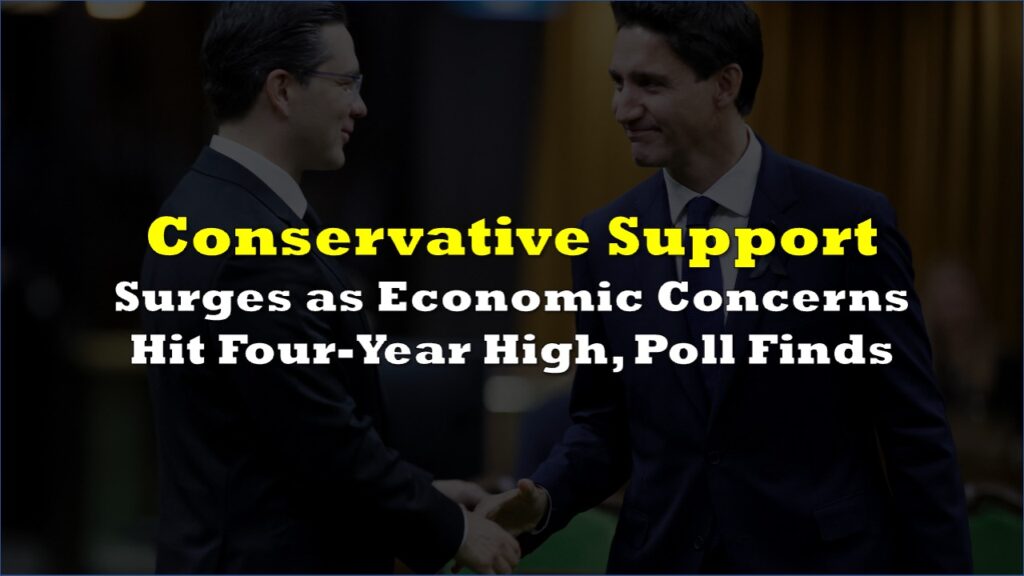The Conservative Party of Canada has released its 2025 election platform, pledging over $54 billion in spending cuts and revenue measures. Validated by two former senior economic officials—Philip Cross and Dr. Tim Sargent—the platform outlines a sharp pivot from Liberal fiscal policy, yet also stops short of balancing the budget within four years.
lol the Conservative platform may be 30 pages, but it's the only one independently reviewed and costed by two of Canada’s top fiscal experts – a former Chief Economic Analyst at Statistics Canada and a former Associate Deputy Minister of Finance. It lays out $54 billion in…
— Jeremy Szafron (@JeremySzafron) April 22, 2025
I love that the CPC costing plan was audited by two individuals who have impeccable credentials – a former Chief Economic Analyst at Stat Can and a former Associate Deputy Minister at Finance.
— Jean Philippe Fournier (@JeanPFournier) April 22, 2025
Still looking for who audited the liberal plan.
Central to the plan is a bold restructuring of government spending. Key measures include replacing only two out of every three retiring public servants, slashing consultant contracts to save $10.5 billion, and defunding entities like the CBC and artificial intelligence initiatives.
Other cost-cutting moves range from eliminating housing accelerator grants to reducing international aid, cumulatively aiming to shrink the deficit by $14.9 billion by 2028-29.
“We will hire for skill, not credentials,” the document declares. Notably, the platform proposes eliminating university degree requirements for most federal public service roles.
Conservative costed platform for those looking: pic.twitter.com/Ydl0bUjHoY
— Daniel Foch (@daniel_foch) April 22, 2025
NEW: @PierrePoilievre's Conservative platform promises to eliminate university degree requirements for most federal public service roles – prioritizing skills over credentialism. pic.twitter.com/EQwz2AcYnu
— Élie Cantin-Nantel (@elie_mcn) April 22, 2025
If you think credentials mean more than skills… the real world will have a big surprise for you…
— Mortimer (@mortimer_1) April 22, 2025
Maybe if you work at a taxpayer funded organization it means more in theory… having credentials is great…but after a certain point in your career, experience is more important pic.twitter.com/1iCNqbjKrz
Tax relief and deregulation
On the revenue side, the Conservatives pledge to cut the lowest federal personal income tax rate from 15% to 12.75%, phased in over four years—a move that will cost $13.7 billion annually by 2028-29. They also aim to eliminate the carbon tax, repeal clean fuel regulations, and cancel the electric vehicle mandate.
These repeals, the Conservatives argue, will unleash economic growth. Revenue projections bank heavily on deregulation to boost GDP—especially from increased housing supply and capital gains tax changes. For instance, scrapping the emissions cap alone is expected to generate $4.95 billion by 2028-29.
However, critics point to the high-risk assumption of nearly doubling projected real GDP growth, from an average of 1.58% to 2.81% over four years.
Thread time. The Conservatives are forecasting that their plan will nearly annual double GDP growth over the next four years. I find that completely unrealistic, but others may differ.
— Dr. Mike P. Moffatt 🇨🇦🏅🏅 (@MikePMoffatt) April 22, 2025
Here's their math.
Deficits shrink—but remain
Despite these sweeping changes, the platform acknowledges continued annual deficits—albeit reduced from the PBO’s baseline. The 2025-26 deficit is projected at $31.4 billion, falling to $14.2 billion by 2028-29. This projects over $100 billion in cumulative red ink through the next 4 years, relying heavily on near-doubled GDP growth forecasts to support its fiscal math.
By comparison, the Liberals’ platform forecasts $225 billion in new debt over the same period.
Still, questions remain. A $20 billion “tariff response revenue” in the first year lacks detailed explanation, and no cost estimate is provided for the promised “Taxpayer Protection Act” requiring referendums for new taxes.
Conservative leader Pierre Poilievre unveils a party platform, called “Change,” which is heavy on tax cuts and does not bring the federal budget back into balance. pic.twitter.com/YSa6WiTlkE
— Glen E. McGregor (@glen_mcgregor) April 22, 2025
The platform also pivots toward economic nationalism. It pledges to end rebates for made-in-China electric vehicles, cut taxes on Canadian-made cars, and implement a “Buy Canada” procurement policy. It backs a CANZUK free trade deal with the UK, Australia, and New Zealand and proposes using Article 6 of the Paris Agreement to export Canada’s cleaner energy resources.
🔴 BREAKING:
— CANZUK International (@CANZUK) April 22, 2025
Conservative Party of Canada pledges to "pursue a CANZUK free trade and mobility agreement" as part of their election platform. 🇨🇦🇦🇺🇳🇿🇬🇧@CPC_HQ #Electiocdnpol @PierrePoilievre pic.twitter.com/AVWcH5vMVT
In sum, the Conservatives offer a platform of structural reform, deregulation, and targeted spending cuts—all designed to contrast sharply with Liberal spending trajectories—yet its success hinges on high-stakes economic assumptions and the public’s appetite for leaner government.
Information for this briefing was found via the sources mentioned. The author has no securities or affiliations related to this organization. Not a recommendation to buy or sell. Always do additional research and consult a professional before purchasing a security. The author holds no licenses.









